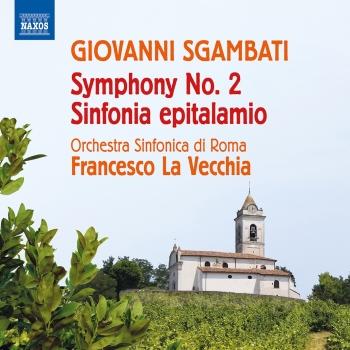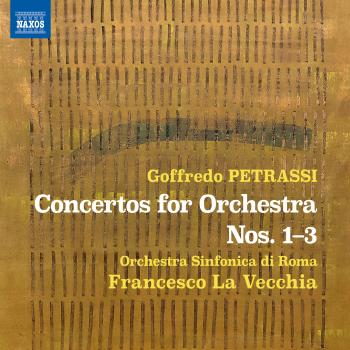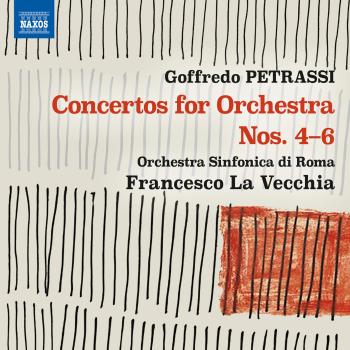Orchestra Sinfonica di Roma & Francesco La Vecchia
Biography Orchestra Sinfonica di Roma & Francesco La Vecchia
Francesco La Vecchia
Born in Rome, Francesco La Vecchia studied with his maternal grandfather and gave his first concert at the age of nine. At eighteen he was the leader of the Quintetto Boccherini and at 23 founder of the Accademia Internazionale di Musica Arts Academy of Rome, and at 27 resident conductor of the Orchestra della Istituzione Sinfonica di Roma. He has conducted more than a hundred of the leading orchestras of the world and recorded in Japan, Mexico, Canada, Brazil and Italy. The ‘Maestro’ series of recordings, named after him, was first released in 1999. Francesco La Vecchia founded the Orchestra Sinfonica del Lazio, the New World Young Orchestra, three festivals in Italy, one in Brazil and one in Mexico and has served as artistic director, principal guest conductor and musical director with orchestras, theatres and festivals in Hungary, Brazil, Mexico, Portugual and Italy. In 2002 he was appointed artistic director and resident conductor of the Orchestra Sinfonica di Roma. Under his leadership the orchestra has rapidly achieved success in Europe and in highly successful tours to St Petersburg, Madrid, Belgrade, Brussels, Rio de Janeiro, London, Athens, Berlin, Beijing and Vienna. He has been the recipient of several important official awards in Italy and abroad.
The Rome Symphony Orchestra
was established in 2002 by the Rome Foundation and is a rare example in Europe of an orchestra that is completely privately funded. The orchestra has won wide international critical recognition, including performances in the presence of four heads of state, the Queen of Spain and the Queen of the Netherlands. The Artistic and Musical Director is Francesco La Vecchia. Leading choruses, soloists and conductors have collaborated with the orchestra and concert tours have taken it to major international venues in Asia, the Americas and Europe, with notable success in 2007 at the Berlin Philharmonic. The orchestra gives some 120 concerts a year, with 70 concerts in the official season at the Auditorium in the Via Conciliazione. Since 2003 the orchestra has played a leading part in the summer international festival Roma nel cuore in the Basilica of Maxentius in the Roman Forum. The orchestra is undertaking for Naxos a series of recordings of important compositions by Italian composers of the nineteenth and twentieth centuries.
L’Orchestra Sinfonica di Roma nasce nel 2002 sostenuta unicamente dalla Fondazione Roma, rappresenta uno dei rari esempi in Europa di orchestra sinfonica a gestione completamente privata. Fin dagli esordi è stata riconosciuta dalla critica internazionale come una formazione di grande prestigio e si è esibita alla presenza di quattro capi di stato, della Regina di Spagna e della Regina d’Olanda. Direttore Artistico e Direttore Musicale dell’Orchestra è il Maestro Francesco la Vecchia. Hanno collaborato con l’Orchestra alcuni dei Cori, dei solisti e dei direttori più importanti del mondo e sono state effettuate tournées che hanno condotto l’Orchestra su alcuni dei palcoscenici più prestigiosi del mondo, in Asia, nelle Americhe e in Europa dove ha eseguito presso la Filarmonica di Berlino nel 2007 e 2009. Nel 2010 si è esibita nel celebre Musikverein di Vienna e nel 2010 ha effettuato una lunga e significativa tournèe negli Stati Uniti. L’Orchestra esegue circa 120 concerti in un anno ed ha un consenso di pubblico tale da raggiungere i 300.000 spettatori; si esibisce nell’Auditorium di via della Conciliazione dove esegue i 70 concerti della Stagione Ufficiale e realizza a Roma un importante progetto di decentramento sinfonico per le giovani generazioni di studenti. L’Orchestra Sinfonica di Roma è la protagonista, dal 2003, del Festival estivo Internazionale “Roma nel cuore” che ha sede nella Basilica di Massenzio al centro dell’area archeologica del Foro Romano. L’Orchestra intraprende per la Naxos una serie di registrazioni di decine delle più significative composizioni di autori italiani del XIX e XX secolo.













